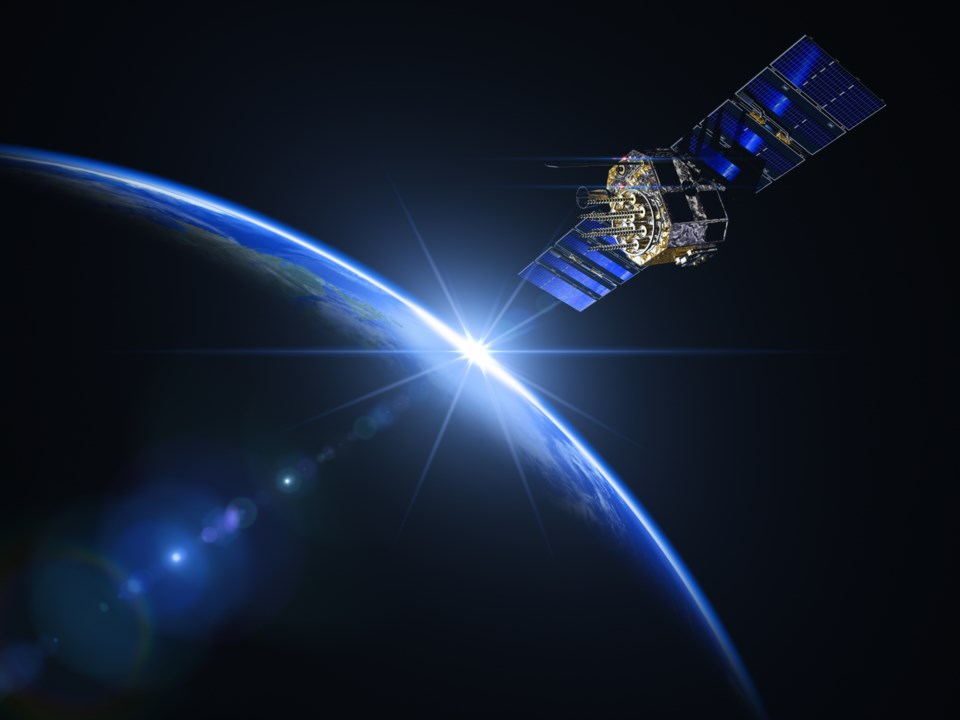The central objective of the is to limit Earth’s warming to well below 2 C above pre-industrial levels, but preferably 1.5 C.
This challenging task will require policies and tools to enable every sector of society to drastically reduce greenhouse gas (GHG) emissions to eventually reach net-zero.
Enacting the most effective and efficient strategies to reduce emissions starts with knowing in detail where, when and how much of these greenhouse gases we are emitting, followed by implementing emission reduction policies and tracking our progress.
Is it possible to track carbon dioxide (CO2) emissions and emission reductions from space? shows that it is.
Why CO2 matters
CO2 is the . Burning fossil fuels for electricity generation, heating buildings, industry and transportation has elevated the CO2 in our atmosphere well beyond natural levels.
Currently, CO2 emission reporting is mainly done by accounting for the mass of fossil fuels purchased and used, then calculating the expected emissions — not actual atmospheric CO2 measurements. The finer details about exactly when and where the emissions occurred are often not available, but more transparent monitoring of CO2 emissions could help track the effectiveness of policies to reduce emissions.
Today help us to get around, track weather systems and communication satellites relay TV, internet and telephone signals. It is time we use satellites to help tackle the biggest challenge that humanity has ever faced — climate change.
Satellites for measuring CO2
A global network of and now consists of . Accurate and precise measurements from these stations have revealed a lot about changes in global atmospheric CO2 and Earth’s overall carbon cycle, but we can’t place these stations everywhere on Earth.
Satellites can observe the entire planet. Those that measure CO2 in the lower atmosphere near Earth’s surface (where CO2 emissions and CO2 uptake by plants happens) first began making measurements in 2002. Since then, they have been getting better and better at doing it, but there have been setbacks along the way.
About a decade of effort by NASA went into developing the satellite to make precise measurements of atmospheric CO2 across the Earth.
In 2009, OCO was lost due to a launch problem. After sustained advocacy for a rebuild of this important climate mission, NASA secured new funding to launch the satellite in 2014 and to the International Space Station in 2019.
The OCO missions were designed to improve our understanding of vegetation’s CO2 absorption, also known as . But what about fossil fuel CO2 emissions?
A new way to verify CO2 emissions
In 2017, I led a research team that published the .
Since OCO-2 was not designed for this purpose, its coverage and infrequent visits were inadequate for operational global CO2 emission monitoring, but we can still quantify emissions in .
OCO-3 is very similar to OCO-2, but has an additional pointing mirror that enables it to better map CO2 around targets of interest like the in Poland, Europe’s largest fossil fuel burning power plant and CO2 source.
With ten clear views of CO2 emission plumes from BeÅ‚chatów imaged by OCO-2 and OCO-3 from 2017-2022 analyzed in our , we were able to determine emissions on those days.
European power plants report but only annual CO2 emissions. Power generation fluctuates with electricity demand and generating unit shutdowns (for maintenance or decommissioning) and CO2 emissions are expected to exhibit proportional fluctuations.
We confirmed this using OCO-2 and OCO-3 in , which showed that satellite observations can track changes in facility-level CO2 emissions. This means that satellites can be used to verify (or refute) reported CO2 emission reductions that result from climate change mitigation — like mandated efficiency improvements, carbon capture and storage technology, etc.
Emissions monitoring for the Paris Agreement
Our approach can be applied to more power plants or modified for CO2 emissions from . We can also try integrating the satellite observations with CO2 monitoring from the ground or aircraft.
While we are already working on this, advances will only be incremental until the launch of the European Commission-funded . CO2M is comprised of two satellites, aiming to launch in late 2025.
These satellites will provide about 50 times as much coverage as OCO-2 and OCO-3 combined and will form the .
CO2M will be a major advance, but just like successful global climate action, requires contributions from many countries. The long-term robust operational global monitoring of GHG emissions will need a .
Hopefully, with new, more detailed and transparent tracking of human-caused greenhouse gas emissions to assess and guide us toward the most effective policies, society can achieve the emission reductions needed to reach .
![]()
Ray Nassar does not work for, consult, own shares in or receive funding from any company or organisation that would benefit from this article, and has disclosed no relevant affiliations beyond their academic appointment.



